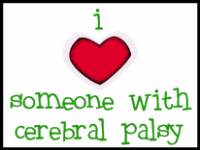
Welcome to Friday Facts! here on the Knowledge Safari blog. Each week we aim to shine the spotlight on various segments of special needs in order to raise awareness and provide information.
Today we focus on Craniosynostosis.
You may have heard of Jorge Posada - the baseball player for the New York Yankees. What you may not know is that his son was born with Craniosynostosis. Becuase of this he started a foundation called The Jorge Posada Foundation that has been set up to help children who have this.
The following is taken from his website and more information can be found there.
What is Craniosynostosis?
The key to treating an infant with Craniosynostosis is accurate early diagnosis and medical treatment. Be sure to bring your infant to well-child visits, so your pediatrician can routinely chart the growth of your infant's head over time. This may help identify the problem early, if it occurs.
An infant’s brain begins to grow before birth and continues to grow throughout the infant’s first three year’s of life. At birth, an infant has 40% of his/her adult brain volume and this increases to 80% by three years of age, and to 90% by seven years of age.
An infant’s skull consists of bones that are separated by soft joints called "sutures". The "soft spot", or Fontanelle is where the sutures meet on the top of the forehead. As an infant’s brain continues to grow, the sutures continue to grow. Throughout an infant’s first three years of life, an infant’s sutures will close or "fuse" in sequence. Craniosynostosis is when an infant’s sutures fuse too early and it affects the growth of the brain. Often, the end result is an infant with an abnormally shaped head. Craniosynostosis may involve the premature closure of a single suture or multiple sutures in the case of a syndrome.
Craniosynostosis, if left untreated, can cause severe and permanent damage. An infant may have increased intracranial pressure, seizures, neurological deficiencies, eye problems, malalignment of the spine, and cognitive and developmental delays.































No comments:
Post a Comment